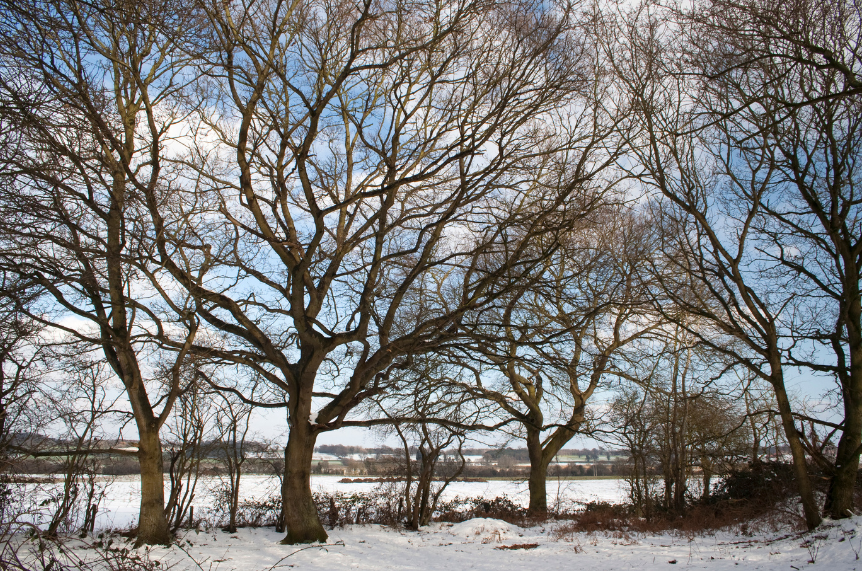Just like animals hibernate in the winter, trees also slow down in the cold months by going dormant. After dropping leaves and limiting functions, it can be hard to determine whether your tree is dead or if it’s simply still dormant. But don’t worry – there are some easy tips to determine the health of your tree during the normal dormancy period.

Why trees go dormant
Dormancy is a survival strategy that deciduous trees undergo to preserve themselves during the harsh winter months. Evergreen tree species retain their foliage year-round as they have developed adaptations that make them resilient to the harsh winter conditions.
Photo source: Annals of Forest Science
Deciduous trees naturally go dormant in the late fall/early winter as prolonged low temperatures move in and sunlight levels decrease. Dormancy allows trees to conserve energy, so they can resume growth when warmer conditions return. During dormancy, trees also retain water and nutrients and can even alter their internal sugar levels to act as an “antifreeze” during frigid stretches.
Tips for Differentiating
Dead vs. Dormant Trees
Bend, don’t break
Try to bend one of the tree’s branches or stems; dormant branches have a degree of bend and are flexible, whereas dead branches will snap off easily when pressure is applied. Remember, a single dead branch does not indicate a dead tree! It’s natural for branches to die off without necessarily indicating a dying tree. If you are finding brittle, easy to snap branches, test multiple places across the tree or shrub to determine if there is a larger problem.
Green means go!
Another clear indicator of a live tree is using your fingernail or a pocketknife to scratch off a small section of the outer layer of bark on a branch or stem. If the tree branch is alive and merely dormant, the interior will be moist and will present a light green color (pictured on the left below). If the branch is dead, the inside will be brittle and brown (pictured on the right below). If you find that brittle, brown appearance on one of the branches, repeat the scratch test on a few more branches. If you find several dead branches, that could be sign of a dead tree, or at least a dormant tree with a lot of dead branches. If the roots are still viable, some careful pruning may do the trick to save your tree. However, at that point it would be beneficial to receive a diagnosis from a professional before taking any action.


Photo source: FoodForestNursery.com
Just like people, trees need their buds

Even during the winter, dormant trees still have their buds. Look for small under-developed buds on your tree’s branches. Trees withdraw water from buds before winter to protect from from freezing. But by scratching open a bud, you should still be able to find a bit of green potential deeper inside!
Be cognizant of your tree’s characteristics – it may not be typical to see prominent buds on some species.
How to maintain a healthy, dormant tree
You determined your tree is healthy – woohoo! Below are some steps you can take to maintain a dormant tree through the tough winter months.
Mulch – Spread a layer of mulch around the base of the tree in a donut shape, refer to the picture on the right for a mulching example. DO NOT create a mulch volcano/crater around your tree. Mulching helps to regulate soil temperature and it retains moisture.


Pruning – The best time to prune is during the winter between Thanksgiving and Valentine’s Day when the trees are fully dormant. Identify the branch collar and the branch bark ridge on your tree. Always make cuts outside of these two areas so that the wound heals properly. For more information on pruning practices, click the button below.
Watering – Stop watering your tree when the ground freezes. At this point, the roots are no longer able to absorb water and the tree is dormant.

Dead Trees
If you suspect your tree is dead, it is important to solicit a professional’s opinion before taking action. Some dormancy periods last longer than others, and factors such as drought or unusual weather and temperature conditions can stress trees – so give them time to bounce back if you are unsure! If your tree has unfortunately died, remember to keep safety first while considering removal, and contact a professional if you aren’t confident in handling it yourself.

